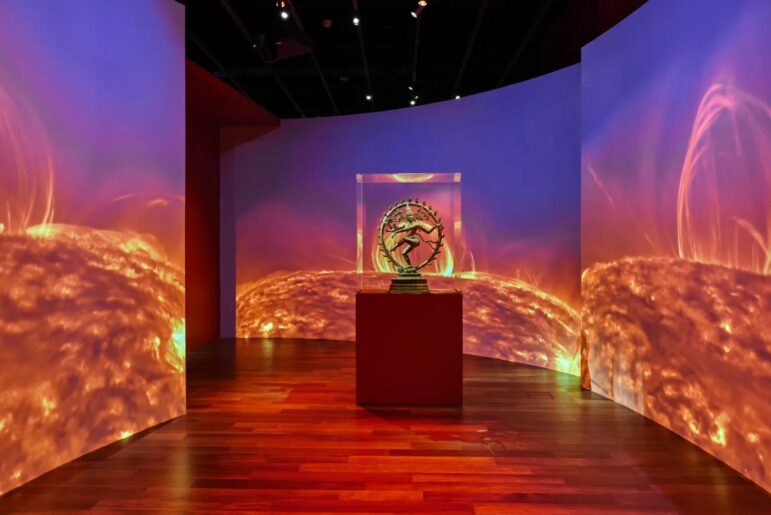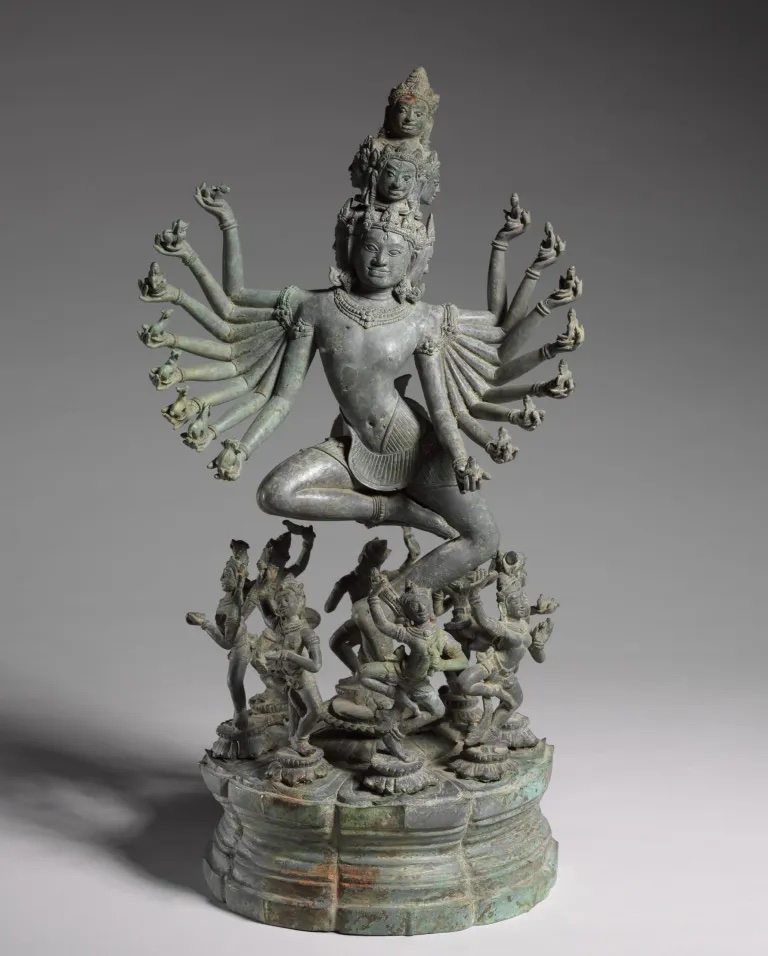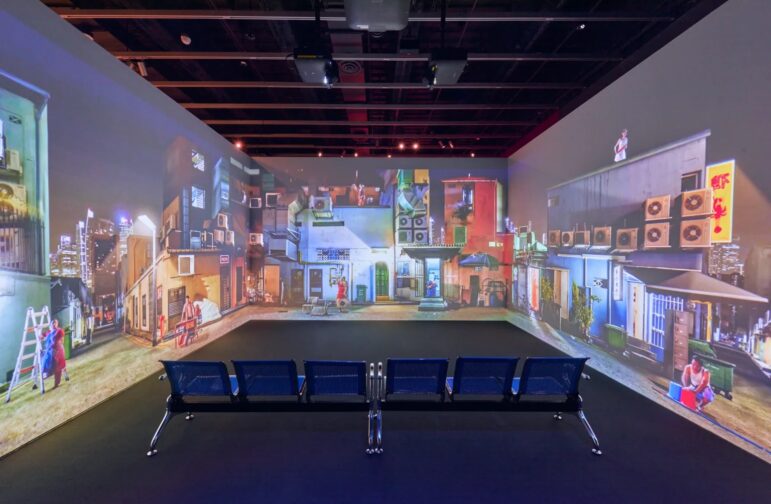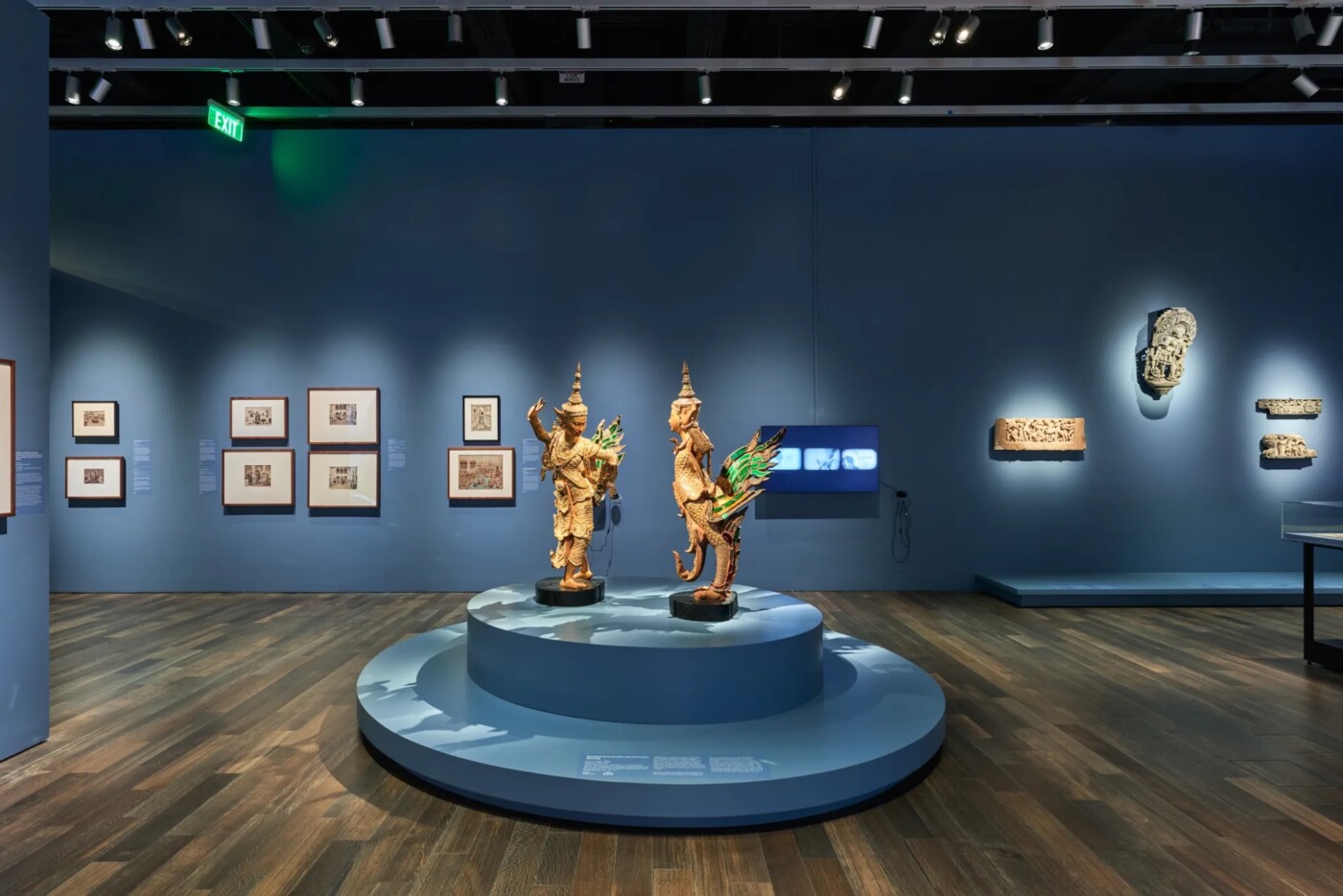Some 2,000 years before “RRR,” the Indian film that won a 2023 Oscar for its spirited anthem-and-dance number, South Asians, Southeast Asians and people from the Himalayan region reveled in the power of dance.
“Beyond Bollywood: 2000 Years of Dance in Art,” on view at the Asian American Museum in San Francisco through July, explores the role of dance in the large region’s culture.
In the exhibition of more than 100 works (ancient and modern sculpture, painting, textiles, jewelry, photographs, video) on loan from 25 international museums and private collections, visitors are directed through five thematic sections, each devoted to a different role dance played over the centuries, each with a single piece as a main focus.
Art of South and Southeast Asia is replete with images of gods dancing, be they Shiva, Krishna or the elephant-headed Ganesha; they all dance with fluidity and grace, bending an uplifted knee across the body, flexing a wrist and tilting a head.
The first section, “Destruction and Creation,” features “Shiva Nataraja, The Lord of Dance,” one of the best known extant Indian works of art, dating from 1125-1175 C.E. Shiva dances within a circle, his four arms and two legs touching its circumference, his right foot resting on a horizontal figure, interpreted as ignorance, which the god is crushing. Though the work was created for worship and not aesthetic pleasure, the graceful, self-contained beauty of the lithe god is spiritually noteworthy and eye-pleasing to contemporary audiences.

Included in this section are later representations of Shiva, as well as images of the Buddhist female deity, Vajravarahi, whose great beauty belies her fierce nature. In her gilded form, dating back to 1300, she balances on one arched foot, legs bent at the knee, right arm raised, left resting on her stomach, a stunning image of graceful balance. But, known as “Lightning Sow,” she frequents the cremation ground, wearing a circle of skulls, made up of psychological poisons that meditation can transform into wisdom.
The second section is “Devotion,” interpreted as the mutual love and longing between gods and devotees, known as “bhakti.”
This principle is epitomized by artwork depicting Krishna dancing with a group of cowherd women in a circle of divine bliss. According to one retelling of the story, Krishna, dressed as a cowherd, played a flute, attracting all cowherd women, who abandoned their families and joined him, transcending all earthly bonds. On display are numerous interpretations of the ecstatic scene, set in various locations, often painted on cotton with watercolors, gold and silver or on paper.

“Subjugation” is the theme of the third section, based on the concept of gods dominating figures of evil or chaos through movement, and in the process, restoring universal order. A stunning visualization of the concept is “Hevajra and his Consort Dancing,” a stone sculpture dating from 1100-1200. The god, multi-headed and multi-limbed, is shown with his consort, both with their feet planted on images of negative forces in the universe, subduing them.
Another representation of subjugation is a bronze sculpture of Hevajra, dating from approximately the same period, dancing atop a demon.
Elaborate mandalas depict similar scenes. Images of Balinese exorcistic dance, including photographs by American social realist artist Ben Shahn, taken in 1969, also are in this section.
“Glorification,” connoting performances which honor gods and kings, is the subject of the fourth section. Much of the art here is set in royal locations, with architectural backgrounds and crowds of musicians and viewers. Stone relief sculptures depict dancers, often with musicians, and sometimes accompanying gods. Two eye-catching large, mythical Burmese bird-people of lacquered wood are embellished with gold leaf and glass stones.
A 2012 film (projected on three screens) titled “I Saw a God Dance II” explores the life of noted Burmese dancer, Ram Gopal, through found footage of the artist preparing for his performance. Filmmaker Ayisha Abraham intercuts narration, ambient sound and scenes of Gopal’s performance to provide another angle on Burmese dance.
“Glorification” also includes monumental paintings of a dance drama, defined as a “circular dance of divine love” performed annually for nobility and numerous photographs of actual performances.
The final section explores celebratory dance, when exuberance and joy—without other meaning—prevail.

“Art of the Rehearsal,” Sarah Choo Jing’s large three-channel panoramic video from 2016, is striking. Filling the gallery, it depicts individual costumed Chinese, Malay and Indian dancers, stopping and starting, interspersed amid a daily-life scene of Singapore backstreets.
The section also has joyful video in which an interviewer in an urban setting questions passersby about their favorite dance steps. They proceed to perform with all the vitality and unabashed joy which dance, in its numerous manifestations, can bring.
“Beyond Bollywood” programming also includes “Dance Dialogue” pop-up performances on second Sundays and Thursdays in the galleries; a monthly dance performance series; all-ages activities on “Family Fun Days” the first Sunday each month; an Asian American Pacific Islander Heritage Month celebration on May 7; and daily exhibition-related art making in the Shriram Experiential Learning Center.
“Beyond Bollywood: 2000 Years of Dance in Art” continues through July 10 at the Asian Art Museum, 200 Larkin St., San Francisco. Admission is $24-$30, free for ages 12 and younger. Visit asianart.org.
